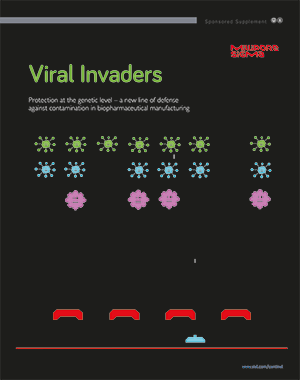Download the pdf here
Chinese hamster ovary (CHO) cells have been a staple of biopharmaceutical manufacturing since the 1980s. It’s been three decades since scientists first started experimenting with CHO cell culture for protein production and, in that time, the industry has garnered a vast amount of knowledge and experience with CHO cells – but challenges remain. Working with living organisms is difficult; cells do not always behave as intended, nor as you would like them to – and, to make matters worse, adventitious viruses are a continual threat against the process. Though viral safety in biomanufacturing is better than ever before, the industry must not grow complacent. A contamination event can shut down a plant for weeks or months while the problem is resolved – generating huge costs and potentially even causing shortages of life-saving medications. Technologies in this area are constantly advancing to help reduce viral contamination, but no company is immune to the risks, as highlighted by highprofile contamination incidents at large, global companies. Millennia of evolution have made viruses the ultimate survival machines, and no single strategy can guarantee total elimination of viral risk. One of the major threats for manufacturers using CHO cells is minute virus of mice (MVM) contamination, which can be shed anywhere mice are found, including warehouses, factories, farms and shipping containers. Because it is so small, MVM removal is difficult and just one virus particle per liter can infect a whole bioreactor – costing millions of dollars. The contamination often goes undetected until a lack of productivity in CHO cell cultures is noticed in the bioreactor. Regulators now expect manufacturers to test every bulk harvest for MVM, and there is a firm expectation that no detectable virus will be found.
It is crucial to keep building viral defenses, and developing new ways to detect, destroy and evade MVM. To that end, the Medicine Maker is delighted to co-present this compendium on viral risk mitigation with MilliporeSigma and allow them to introduce CentinelTM, a means of generating MVM-resistant CHO cells. Centinel was developed using MilliporeSigma’s zinc finger nuclease gene-editing technology, and represents another layer of defense for manufacturers. In the following pages, experts in virology and gene editing discuss how the problem of contamination has changed over the years, describe how gene-editing technology was used to engineer a safer form of CHO cell, and consider the future potential of productivity-enhancing alterations.






